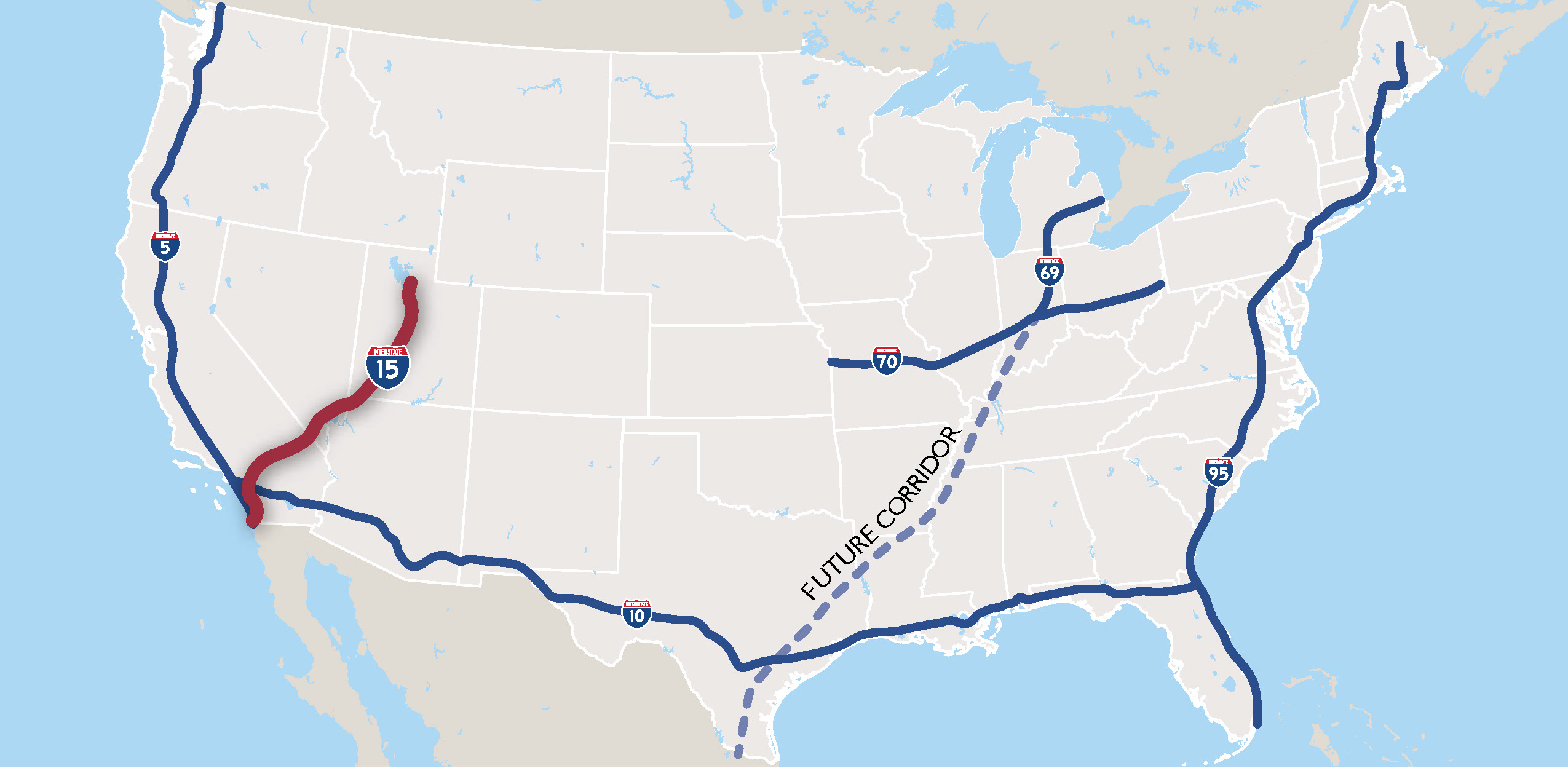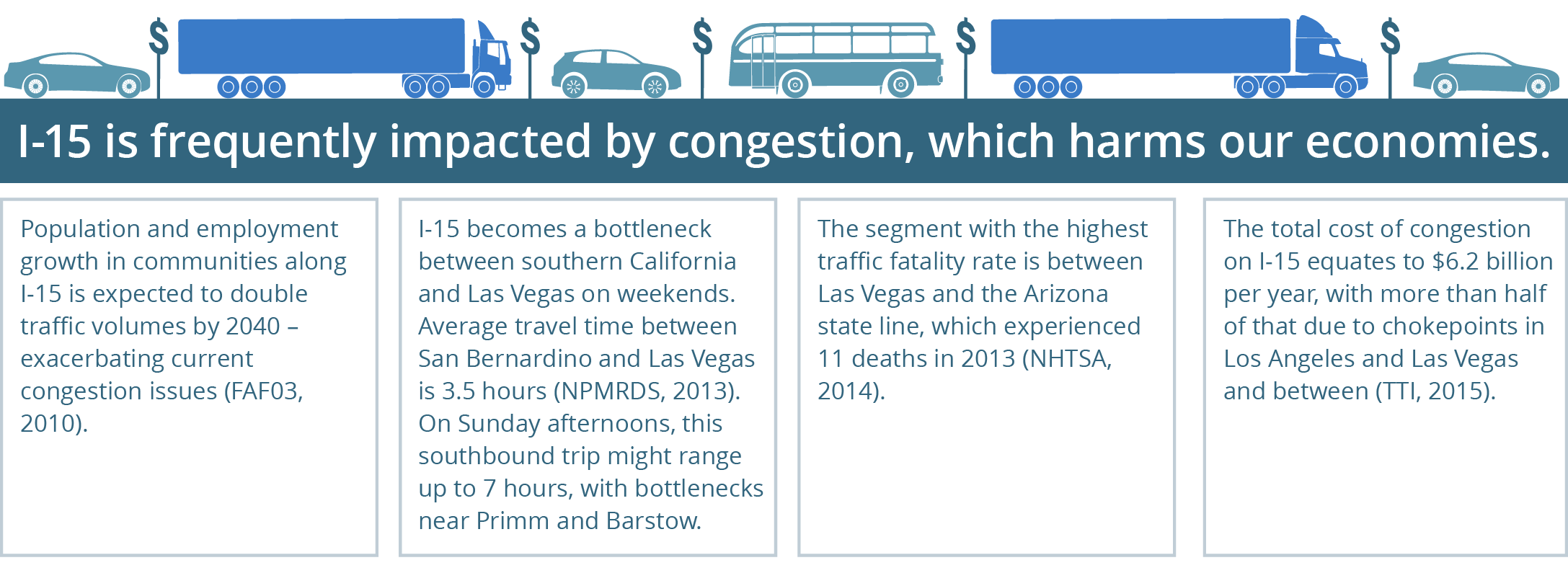Welcome to the I-15 Mobility Alliance website! I-15 Mobility Alliance members are embarking on a new round of collaboration for I-15 corridor system improvements. In addition to updating the master plan and reviewing the list of Immediate Projects of Interregional Significance, the Alliance is seeking potential joint grant opportunities to pilot a smart mobility improvement along I-15.
The I-15 Mobility Alliance Freight Workshop Series was held in 2022. Please click the DOCUMENTS button for a Summary of Findings Memorandum and WORKSHOPS button for additional workshop details.
The departments of transportation (DOT) in Arizona, California, Nevada, and Utah are part of a cooperative alliance to develop a long-range multimodal transportation system master plan that will address current and future mobility needs along the I-15 corridor from southern California to northern Utah.
The vision of the Alliance and its members is to develop a comprehensive, multimodal master plan for the I-15 Corridor; prioritize projects and policies of interregional significance; seek financial and other resources necessary for the implementation of the master plan; and devise appropriate governance mechanisms for the ongoing efficient and effective construction, operations, and maintenance of the corridor on a more sustainable basis.
The critical economic importance of I-15 is federally-recognized through the prestigious designation as a Corridor of the Future, given in 2007. This designation recognizes that the health of the corridor directly impacts the wealth and welfare of the region it serves.
I-15 at a Glance
I-15 is a major transcontinental north-south highway in the western United States that extends more than 1,470 miles through the states of California, Nevada, Arizona, Utah, Idaho, and Montana. It is the principal artery linking coastal ports to inland population centers and connects with the nation’s three coast-to-coast east-west highways: I-10, I-80, and I-90, in addition to other east-west interstates including I-40, I-70, I-84, and I-86.
Currently, the primary obstacle for seamless movement on I-15 is congestion, which is caused by commute traffic, safety incidents, emergency conditions, natural disasters, and numerous other factors. In addition, the I-15 Corridor is an avenue for truck movements out of the ports and agricultural regions of southern California and onward to major cities, such as Las Vegas and Salt Lake City, further contributing to congestion and safety incidents along the corridor.



